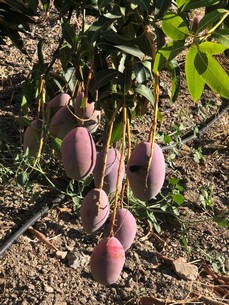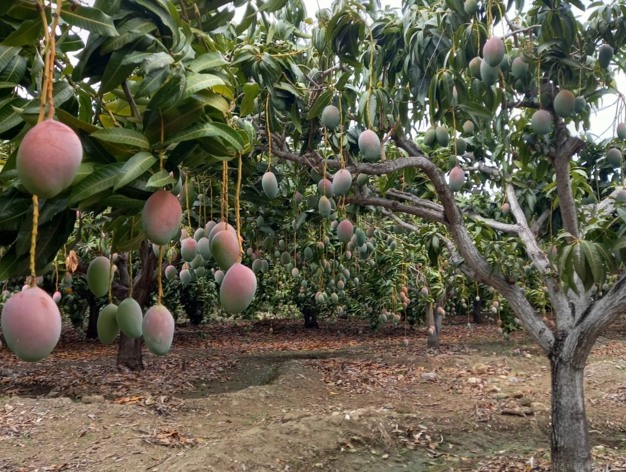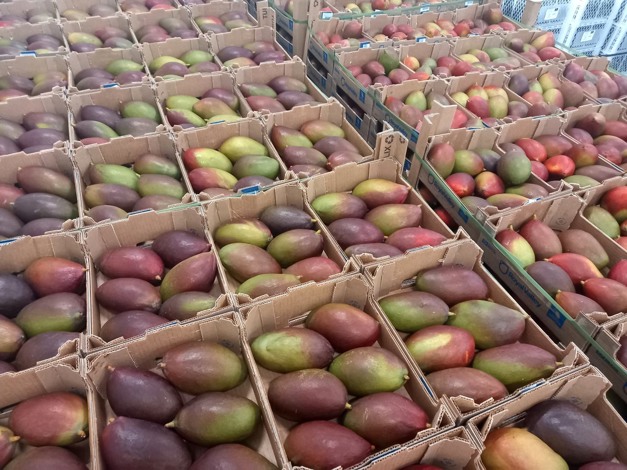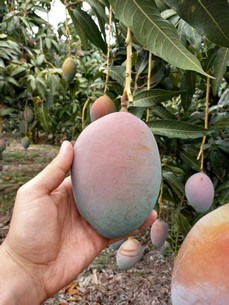The Osteen mango campaign in Spain will start around a week and a half or two weeks earlier compared to last year. "There are companies that will start harvesting fruit this week," said Antonio Mendez, of Avos Europe.

"This year, unlike in the previous one, Spain will have a lower volume this campaign, although larger calibers, but things are looking difficult, because in addition to this lower quantity, the fruit is expected to ripen quicker because of the heat. That is why I believe that this year there will be greater opportunities for other import varieties, such as the Palmer, Tommy Atkins or Keitt, especially from October onwards."
(Photo right: Spanish Osteen mangoes).
The main markets for Osteen mangoes are France, Spain and Germany, with Portugal, Switzerland, Belgium and Austria also playing an important role. "In this period, Dutch brokers are still working mainly with the Palmer, since they do not have access to the Osteen, of which there is also a limited volume, so they are supplying imported Palmer to the rest of the European markets," said Antonio.

Keitt mango, Dominican Republic.
"The Palmer could be said to be the market's mango par excellence. Compared to the Kent or Keitt, the Palmer mango has a very intense and attractive external color that is highly appreciated, particularly in Spain, and it also stands out for its quality, shelf life and price, which have made it very popular in Europe. Brazil also has the advantage of being able to supply it all year round."

Palmer mango from Brazil.
"We at Avos Europa are currently supplying the European market with Brazilian mangoes, and we will only start with the Spanish season when our fruit reaches its optimum point of ripeness. We always work directly at origin, and not only in the case of mangoes," said Antonio. "At Avos Europe we are specialized in avocados, which we obtain 52 weeks a year from Chile, Peru and the Dominican Republic, and with which we are developing programs in the European retail. We work with both conventional and organic products, and this year we have acquired a new packaging plant in Velez-Malaga which will allow us to considerably increase our capacity."
"As for mangoes, all markets are currently very quiet when it comes to imported fruit, as there is still quite a lot of stock of mangoes from Senegal. The only thing we see being demanded at this time is the early Spanish Osteen, which is a very desirable mango because it is supplied more locally and stands out for its organoleptic characteristics. In fact, Osteen mangoes cannot be considered the same commodity as other mango varieties."
early Spanish Osteen, which is a very desirable mango because it is supplied more locally and stands out for its organoleptic characteristics. In fact, Osteen mangoes cannot be considered the same commodity as other mango varieties."
"However, when October comes, there will only be some small volumes of Osteen and Keitt left, so there will again be a significant demand for imported mangoes."
(Photo: Keitt mango from the Dominican Republic).
 For more information:
For more information:
Avos Europa
Malaga, Spain
info@avoseuropa.com
antonio@avoseuropa.com
Tel.: +34 622 933 328
www.avoseuropa.com
